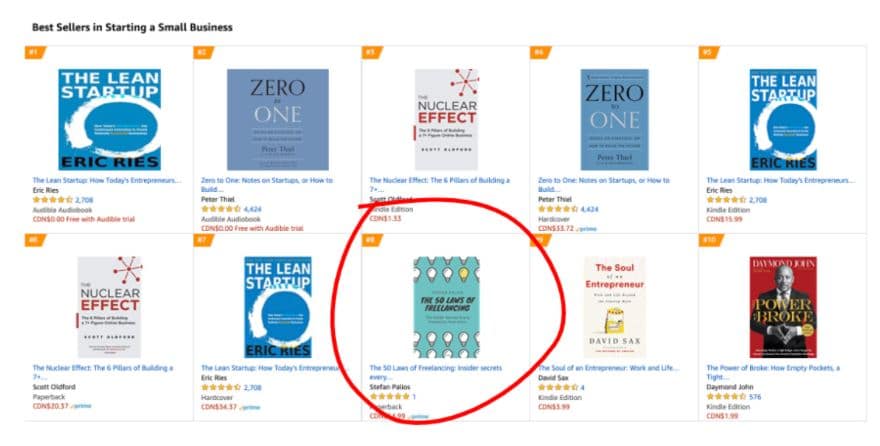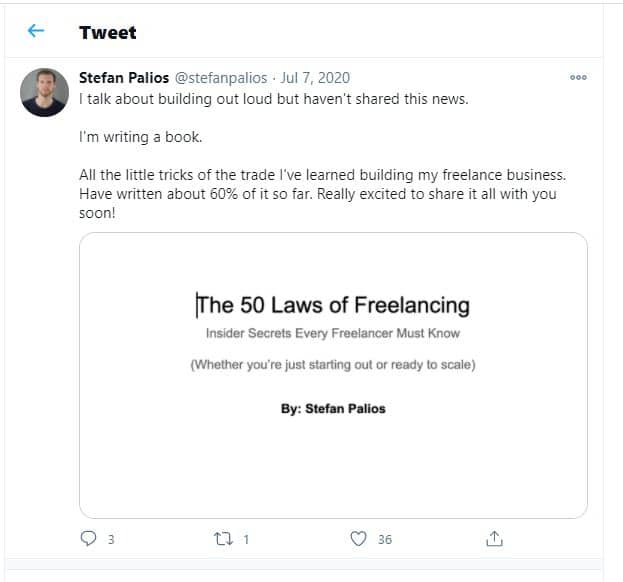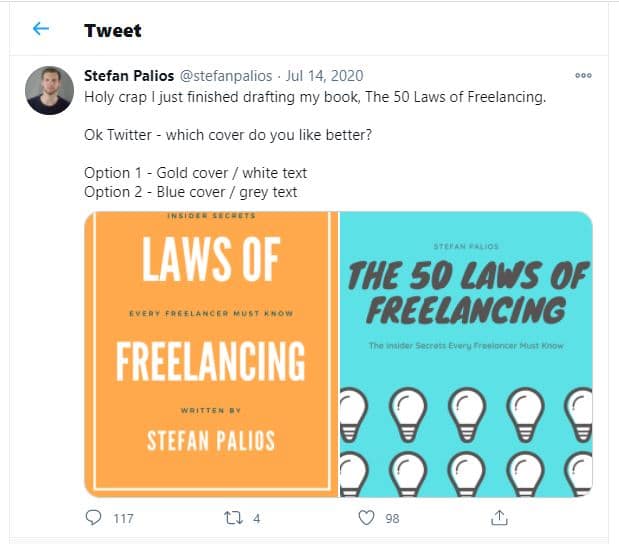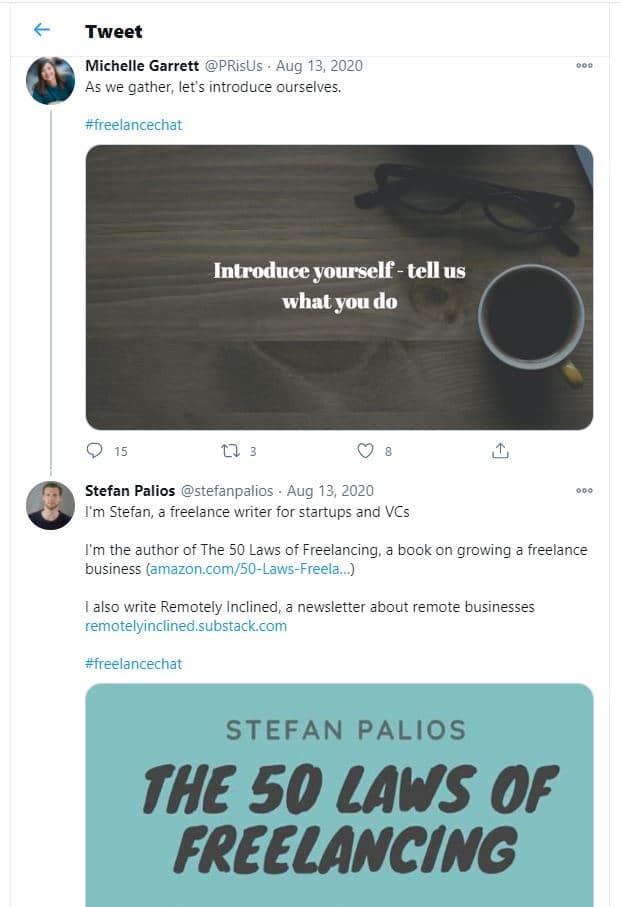What’s the secret to self-publishing success?
You write a book, get it on Amazon, and voilà …it’s a best seller.
You’re rolling in money. Publishers are banging down your door with a fat contract to buy your book. You’re tapped for radio, TV, and media appearances.
Ahem…it doesn’t really work like that, especially if you’re a writer without an audience, massive following, or fat marketing budget.
So how do you take the self-publishing route, write a book, get tons of traffic, and sell copies?
If you’re feeling a little overwhelmed about self-publishing a book, marketing it, and making sales, you’re not alone.
It’s easy to think there’s just too many moving parts for you to manage. But that’s just fear and uncertainty trying to stop you.
If you have a marketable idea for a book, self-publishing is a great way to go.
Chances are pretty good you’ve got the writing chops to make it happen. But you’ve got a lot of questions about the marketing side of self-publishing. Yes?
That’s exactly where I was. But I decided to give it a shot anyway.
Without a big audience, massive following, or unlimited marketing funds, I turned my book into a best seller based on a three-phase strategy.
Here’s how it’s done:
Self-publishing: 3 phases to hit the best-seller list

Stefan Palios
I decided to write The 50 Laws of Freelancing as a personal challenge.
I’d written hundreds of blog posts and wondered if I could write a whole book by myself and take it all the way to the finish line by self-publishing.
I had no idea how to market a book, but I started looking around and putting a few pieces together.
In the end, the marketing strategy I built helped me hit the top 10 bestseller list for Small Business books on Amazon.
I was in league with Eric Reis’ The Lean Startup, Peter Thiel’s Zero to One, and Daymond John’s The Power of Broke.
In this post, I’m running through the three phases of my self-publishing marketing plan and how I built it out and how each channel and tactic worked for me.

Phase 1: Pre-Marketing
I was too scared to tell anyone I was writing self-publishing a book until I was about half way through. But then I did three things:
- Shared the news on Twitter.
- Started asking people if they would review my book.
- Asked for my first interview.
I shared a simple note: that I was writing and self-publishing a book. That was it. No asks, just awareness. I didn’t even have a pre-order link set up (honestly, I didn’t know how to do that at the time)

After letting some folks know about the book, I decided to up my Twitter game. I not only shared that I was writing and self-publishing a book, but I engaged people in the process.
Specifically, I asked about cover art options.

It was one of my most interacted-with tweets of all time. For context, I had about 2500 followers when I tweeted that and would get maybe 10 likes on a tweet if I was lucky. This one got nearly 100 likes and even more responses. People liked sharing their opinion.
Ask for reviews
I looked up prominent entrepreneurs and freelancers, then asked if they’d like a free advance copy of the book (and if they’d be open to sharing a testimonial review). About half of the folks I reached out to said yes.
Not only did this generate some awesome reviews for the book, but also helped for the launch. Every person who reviewed the book promoted it for me on launch day, which was very helpful for initial traction.
Reach out for an interview
I learned a lot of the self-publishing process from a book called Write Your Book On The Side. I even thanked the author – Hassan Osman – in my acknowledgments. I reached out to him, told him how helpful his book was, and noticed he had a podcast about self-publishing. I asked if I could be on it. He said yes.
Phase 2: Launch marketing
Here are the tools and processes I used to land multiple webinar spots, conference speaking spots, and podcast interviews about self-publishing a book.
HARO
- Help a Reporter is always well, helpful. I pitched out as often as I could. This landed me one feature.
Radio Guest List
- This is like HARO, but for podcasts. I landed one podcast interview.
Podcast Guests
- Another HARO-like email list for podcasts. I landed one interview.
5 to 9 conference
I saw a couple tweets about #5to9 and pitched myself as a speaker. They liked my talk idea (building an inbound funnel as a freelancer) and gave me the slot. I also turned that talk into a longform blog post on building an inbound funnel, which gave me further opportunity to market the book.
Indy
Indy is a freelance business management platform. I noticed they had a blog, so I pitched a guest post – they accepted and I wrote a post about how I manage my money as a freelancer.
Corporate sales
I reached out to the CEO of Virtual Gurus, a freelancing platform. She wanted unique gifts to welcome new freelancers on the platform, and I pitched my book about writing and self-publishing. She ended up buying the book to put in welcome packages mailed out to new virtual gurus on the platform.
#FreelanceChat
I’d taken part in the Twitter chat for a while before my book launched and asked the organizer if she’d review my book. Not only did she offer a review, she also gave me a guest hosting slot after the book went live.
Friends and family
I created a list of 40 friends and asked them if they’d be willing to do a social post about my book when it went live. On launch day, I sent them all copy-paste messages to use. I think about 15 people ended up posting on social after the book launched, which helped get some extra traction.
Phase 3: Support marketing
Support marketing for me is all about reviews and content.
Reviews
I asked everyone who reviewed my book pre-launch if they’d be comfortable putting that review as an official Amazon review. A bunch did, and now the book has a 5-star rating.
Content
I continued to look for guest post opportunities and topics about self-publishing, writing, and freelancing to cover on my own blog (I wrote about my writing process – I wrote the book in under three months) and newsletter. Further, I looked for opportunities to organically talk about my book in other content, such as my writing for Thrive Global.
After I published the book, I updated my social media profiles to reflect that I was a (self) published author. I also talked about self-publishing the book when I introduced myself in Twitter chats, in Slack communities, and other places online.

Launching a book one step at a time
If you’re thinking of writing and self-publishing a book, my advice is to follow one step at a time, just as you would if you were producing content for a client. From there, I hope resources like this blog help you with a few marketing tactics to get initial (and ongoing) sales.
Ready to be a self-publishing success? Let’s discuss in the comments below.
Stefan Palios is a freelance writer, editor, publisher and author of 50 Laws of Freelancing.










